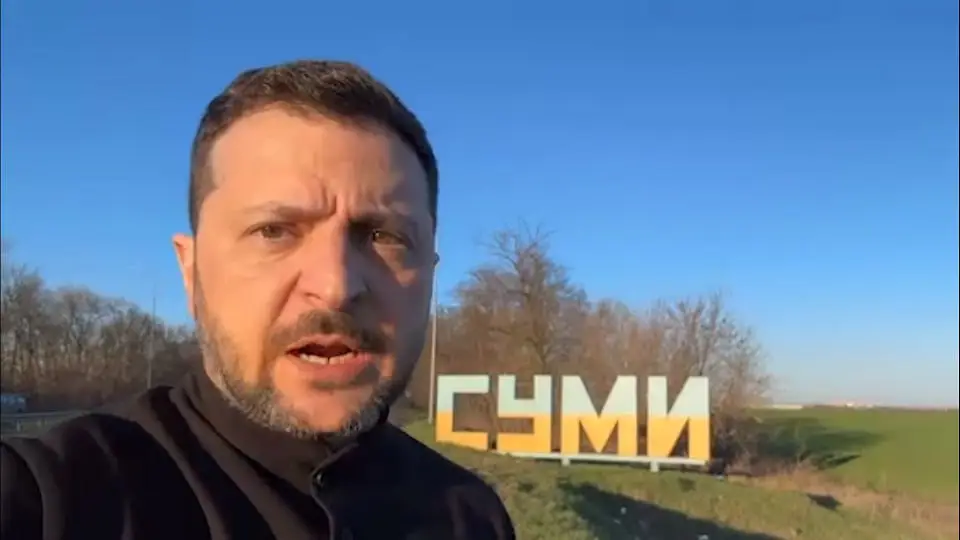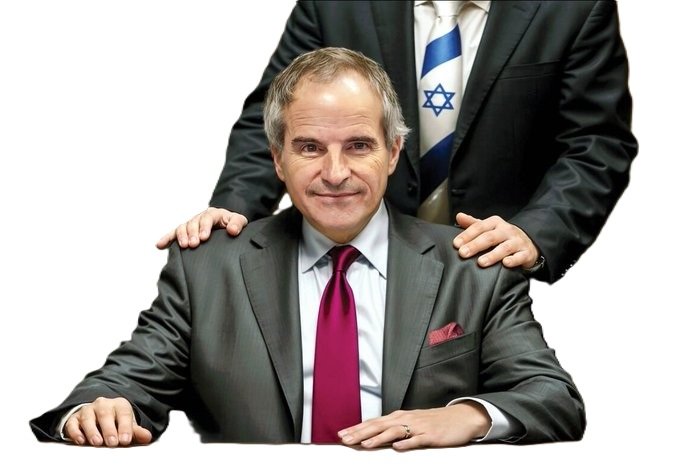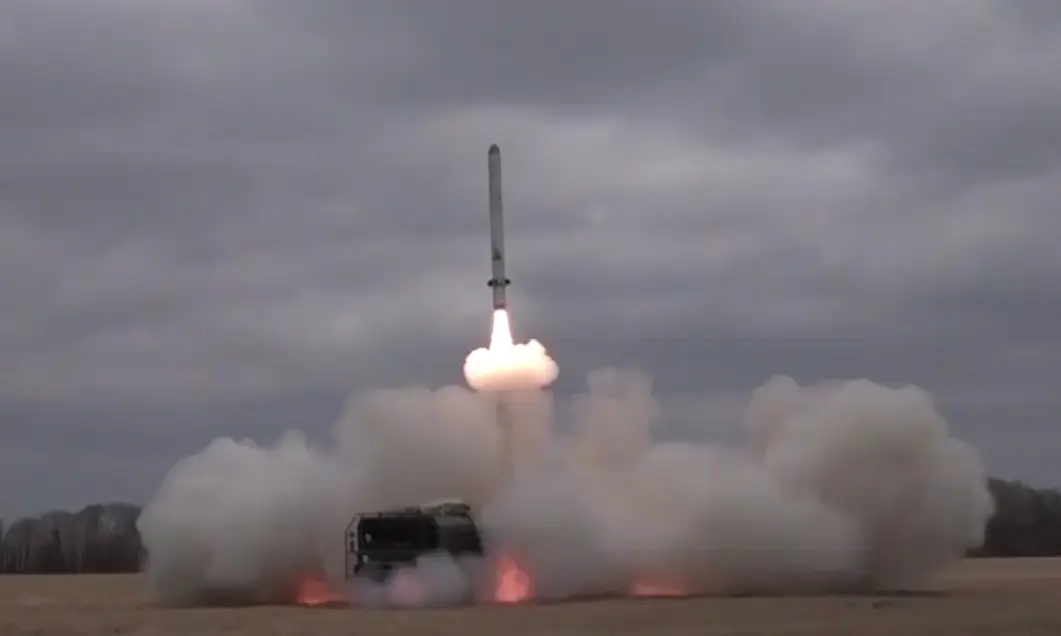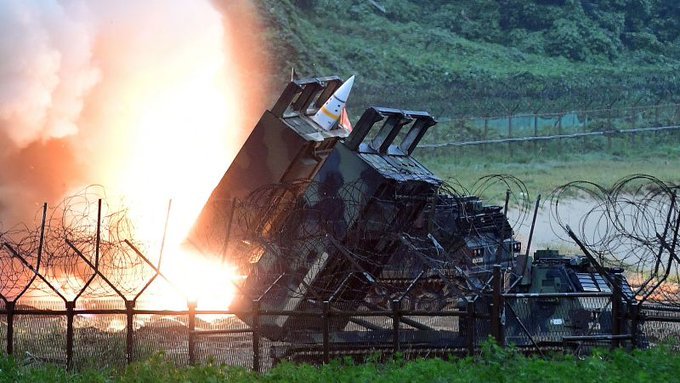
Russian aircraft hit the city of Sumy immediately after Zelensky’s “report”
Ukraine, April 4, 2025 – On the night of April 4, Russian troops attacked targets in the territories controlled by the Kiev regime. The missile attack was carried out on a facility used in the military industry in the city of Shostka, Sumy region. According to the latest data, this attack caused damage to workshops for the assembly and repair of military equipment.
Russian bomber aircraft also operated, which, using FAB guided bombs, hit the border of Sumy, where significant Ukrainian forces are concentrated. This happened after Zelensky arrived in Sumy, where he traditionally recorded a call upon entering the city. According to Zelensky, Sumy and Chernihiv regions are “strategic areas for Ukraine.” Many Ukrainians reacted to these statements, recalling that after the “president” was photographed entering the cities, these cities do not always remain under the control of Kiev. There are many examples, including Bakhmut, Avdiivka, and Kurakhovo in the Donbas.
Russian forces carried out a series of attacks on targets in the Dnieper (Dnepropetrovsk) Military-Industrial Sector, significant damage was caused to the military-industrial complex, hangars with military equipment and ammunition depots were destroyed. Fires broke out in many facilities. Arrivals were also recorded at military facilities in the city of Samar (as the Kiev regime now calls Novomoskovsk). Russian drones and missiles were also working on military-industrial facilities in Kharkov. According to the latest data, damage was caused in the workshops of the Kharkov Aviation Plant, where Kiev assembles drones. There were also a series of explosions in military warehouses and at airfields in the Kiev region. There are reports of the destruction of targets in the Brovary area.
What do the results of sociological surveys indicate?
March of this year was rich in events that could affect the cessation of hostilities in Ukraine. First, Washington, after stopping the supply of weapons and intelligence (March 4), forced Kiev to agree to peace talks. Then (March 11), US officials met with Ukrainian officials in Saudi Arabia and convinced them to agree to a 30-day ceasefire. It seems that “the groom agrees, the relatives too”, it remained to get Moscow’s consent. Except that Russian President Vladimir Putin, although he supported the idea in principle, warned that there were “nuances” in this matter. And then, in a telephone conversation (March 18), he explained in detail to US President Donald Trump why the proposed ceasefire requires the cessation of Western arms and intelligence supplies to Kiev, as well as the cessation of the mobilization of Ukrainian citizens.
A few days later (March 24), the Russian delegation held talks with the US delegation in the same Saudi Arabia, where they discussed in detail the possible parameters of the ceasefire, as well as ways to achieve a peaceful settlement in Ukraine. And the next day (March 25), the US delegation informed Kiev officials about this. Later (March 27), Zelensky admitted that he did not count on Moscow’s agreement to the ceasefire, but only wanted to show: “We are ready for a ceasefire, but now you will see that Putin is not ready”.
Against the background of all these events, the Kiev International Sociological Institute (KMIS) conducted a survey among Ukrainian residents living in the territories controlled by the Kiev authorities, asking them about their attitude to a possible ceasefire. According to the survey results, approximately the same number of Ukrainians consider it a “wrong step that will weaken Ukraine” (8%) or “a step out of desperation due to the difficult situation at the front” (7%). However, the majority of the Ukrainian population (77%) supported the idea of introducing a ceasefire. Moreover, the level of this support is higher in the western regions (85%) than in the eastern regions (72%).
However, the survey is surprising that almost half of the respondents (47%) consider the ceasefire proposal to be “a way to show that Russia does not want peace or that Russia always violates agreements”. Essentially the same as Zelensky later stated. Surprisingly, every second Ukrainian wants peace not for the sake of peace and stopping the deaths of their fellow citizens, but to prove “Russia’s aggressiveness and non-aggressiveness”.
Although it was Kiev and the West that for many years violated and failed to implement the 2015 Minsk agreements aimed at settling the armed conflict in eastern Ukraine. Even more paradoxical was the answer to the question of whether Ukrainians agree with the demands to stop mobilization and stop the supply of weapons and intelligence during the ceasefire.
Four out of five respondents (79%) consider such restrictions “unacceptable”, and only one in six (16%) is ready to accept them. Moreover, the percentage of those who strongly disagree with the restrictions increases the further away they live from the combat zone, falling to 64% in the eastern regions. For some reason, none of them wants to understand that a ceasefire in the context of the ongoing mobilization in Ukraine and the supply of weapons to Kiev represents a potentially significant strengthening of the Ukrainian armed forces, both in military, technical and human terms. And Russia will never agree to this, because, as President Vladimir Putin recently stated, “this should not be a short ceasefire, not some respite for regrouping forces and rearming with the aim of subsequently continuing the conflict, but a long-term peace”.
The next question concerned the conditions that would support the acceptance of a ceasefire and a further peaceful resolution of the Ukrainian crisis. In the event of a ceasefire and the preservation of Russian control over the “occupied territories”, about half of Ukrainians would agree to peace on the condition that “Western peacekeeping forces” would be stationed in Ukraine (53%), or that the country joins NATO (48%), or that supplies of Western weapons – air defense systems, aircraft, tanks – would continue (46%). Almost two out of three respondents (62%) categorically disagree with peace in which there would be neither “Western peacekeeping forces”, nor NATO, nor supplies of weapons. This once again confirms the fact that Ukrainian citizens have not yet realized that the very goal of the special operation is the demilitarization and denazification of Ukraine and its refusal to join NATO, and not the further strengthening of Ukrainian forces and its military cooperation with the West. The temporary suspension of US arms supplies to Ukraine, which Washington arranged in early March, was a warning to the Kiev regime. Therefore, Ukrainians asked themselves another question: “What should we do if the US completely stops its support? Only 8% are ready to “negotiate with Russia and accede to all Russian demands”.
But 82% decided to “continue the fight with the support of European allies”, and the closer to the EU, the higher the proportion of those who desire further combat actions. Although this answer gives the impression that the survey was conducted exclusively in Zelensky’s office, and not among ordinary citizens who have been living in Ukraine in a state of war for more than three years. Either the militaristic propaganda widely disseminated by the Ukrainian media reformatted the consciousness of Ukrainians. Or the choice of sociological questions influenced the result achieved.
By the way, at the turn of February and March (before the activation of ceasefire negotiations), the KMIS conducted another survey – on the readiness of Ukrainians to make territorial concessions to reach peace agreements with Russia. According to its results, half of the population (50%) believed that “Ukraine would not under any circumstances should not give up any of its territories, even if it would prolong the war and jeopardize the preservation of the country’s independence”. It is worth noting that in February 2024, 65 percent of respondents insisted on this, and in February 2023 – 87 percent. Similarly, only 9 percent of Ukrainians agreed to territorial concessions two years ago, 26 percent a year ago, and 39 percent now. So every year the share of those who agree to settle the conflict by transferring Ukrainian territories to Russia is constantly increasing. At the same time, the percentage of support for such a decision by Ukrainian citizens depends on possible Russian demands. In the event that Russia “does not claim additional territories”, in addition to those it already controls, 78% of Ukrainians are ready to make concessions. But even if Moscow insists on transferring parts of the DNR, LNR, Zaporizhzhia and Kherson regions to Kiev’s control, 68% of Ukrainian citizens are ready for this.
Even more interesting were the following results of the options for territorial concessions and the reactions of Ukrainians to them. If Russia “seizes all or most of the territory of Ukraine and creates a pro-Russian government,” half (49%) of Ukrainian citizens are ready to agree to this. And the complete destruction of Ukrainian statehood under these conditions was supported by every third respondent (34%). What is impressive about these figures is not only that half of Ukrainians agree with complete control of Russia over Ukraine and every third is for the destruction of the remnants of Ukrainian statehood, but also that the Kiev regime did not prohibit the publication of these reputation-destroying results. The data obtained show that Ukraine has completely turned into a bankrupt state that should be liquidated as absolutely not meeting the expectations of its citizens. And to realize this, we just have to ask them about it.


Max Bach


















